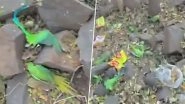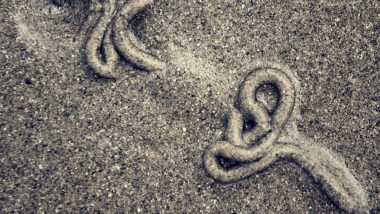A sample of microscopic worms that were suspended in a deep freeze in Siberia for 42,000 years have come back to life after being defrosted, scientists say. The findings, published in the journal Doklady Biological Sciences, represent the first evidence of multicellular organisms returning to life after spending a long period in Arctic permafrost.
Nematodes are tiny worms that typically measure about one millimetre in length, and are known to have impressive abilities. Some are found living 1.3 kilometers below Earth's surface, deeper than any other multicellular animal. Certain worms that live on an island in the Indian Ocean can develop one of five different mouths, depending on what type of food is available.
Researchers from Moscow State University in Russia and Princeton University in the US analysed 300 samples of Arctic permafrost deposits and found two that held several well-preserved nematodes. One sample was collected from a fossil squirrel burrow near the Alazeya River in the northeastern part of Yakutia, Russia, from deposits estimated to be about 32,000 years old, the 'Live Science' reported.
The other permafrost sample came from the Kolyma River in northeastern Siberia, and the age of nearby deposits was around 42,000 years old, scientists said. The isolated worms represented two known nematode species: Panagrolaimus detritophagus and Plectus parvus.
After defrosting the worms, researchers saw them moving and eating, making this the first evidence of "natural cryopreservation" of multicellular animals. This is not the first organism to awaken from millennia in icy suspension. Previously, another group of scientists had identified a giant virus that was resuscitate.













 Quickly
Quickly


